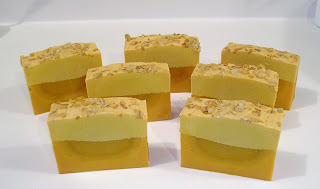All the more reason to use salt or sugar scrubs!!
Plastics in the Great Lakes
Guest post from Dr. Marcus Eriksen, executive director of The 5 Gyres InstituteWhen we joined the crew of the Flagship Niagara to study plastic pollution in three of the Great Lakes this summer – Superior, Huron, and Erie. We had no idea we would find a greater number of plastic fragments than any other water surface sample collected around the world.
The 5 Gyres Institute has traveled to each of the five subtropical gyres in the North and South Atlantic, Pacific, and Indian Ocean, collecting over 500 samples of the water surface. In the Sargasso Sea we had a few samples with over 400 particles of plastic pollution. Our net has a 1/3rd millimeter mesh with a 60cm wide opening. It looks like a manta ray, and is towed behind the boat at 2knots for one hour, so you’re collecting roughly 2 football fields of area when you trawl. You can imagine our surprise when we counted 1596 particles from one sample taken a couple hundred miles east of Cleveland, Ohio. But the fragments are tiny.
They look like little perfect spheres, multi-colored beads, the size of the period at the end of this sentence, and they’re everywhere. These micro-beads are difficult to find in the water. They are dirty, look just like fish eggs, and you need a microscope to tell the difference. But they are easy to spot on store shelves. In fact, many products say “microbeads” on the front, and in the ingredients section you’ll see “polyethylene”. They are the exfoliants in skin care products.
They are designed to abrade you face when you rub those creams into your skin. They are designed to wash down the drain, quickly finding their way into our waterways. This is the exact opposite of Extended Producer Responsibility (EPR) we aim to see in everything we manufacture, where you consider the full lifecycle of your product when you sell it. It’s just common sense. No longer can we consider the land and sea to absorb garbage unnoticed. We bought 4 skin products to see just what the exfoliating materials are.
Two of the products state they contain microbeads, and when you dissolve them in water and pour it over a t-shirt, what’s left behind is plastic. Two of the products were different, after dissolving them in water, we found crushed apricot shells in one and cocoa beans in the other. One is the problem, the other is the solution. We’ve uncovered a problem, once unseen, but now obvious to us all. The alternatives, Apricot shells and cocoa beans, do the same thing that polyethylene microbeads can do, but with the added benefit of being environmentally benign.
There are three approaches that must happen simultaneously in order to reach a positive conclusion. First, the consumer is responsible for their choice, both at the checkout line and voting booth, so we must raise public awareness. Second, EPR is a legislative move, one that makes companies adhere to the right choice. But we prefer the third option here, the one that puts choice in the hands of the companies making the product in the first place. Businesses, like Nutrogena and Johnson & Johnson, have known about the natural exfoliants for years, but they may not know that their product pollutes the Great Lakes. With this information, we believe good people will do the right thing. This means ending the use of plastic microbeads in consumer products.
This study was conducted in collaboration with SUNY Fredonia, specifically Dr. Sherri “Sam” Mason, and with funding provided by the Burning River Foundation.
















